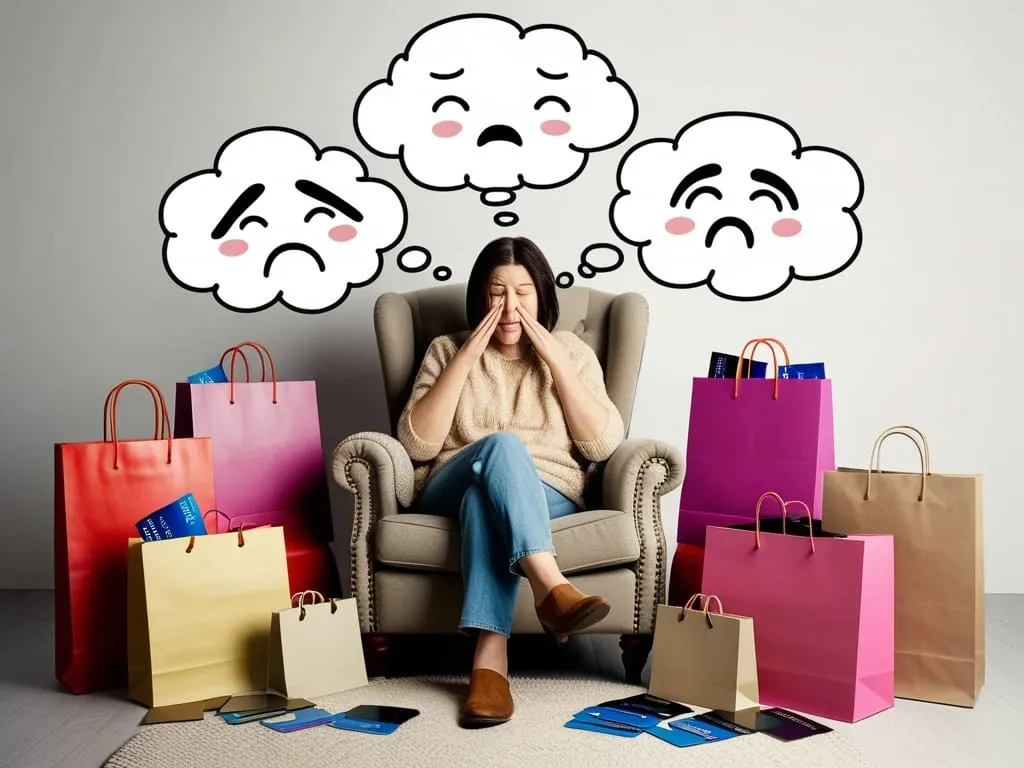Imagine a rainy afternoon, cozied up in your favorite chair, scrolling through an online store. Suddenly, a wave of unexplainable joy washes over you as you impulsively click "buy now" on that shiny new gadget. This is a scenario many of us can relate to, where our emotions take the reins and influence our financial decisions in profound ways.
Let's meet Sam, an ordinary person who, like many of us, navigates life's ups and downs with a wallet in hand. Sam's story is a common one, filled with everyday scenarios where emotional states dramatically shape financial choices. Whether it's retail therapy after a tough day at work or celebratory splurges after a promotion, Sam's journey highlights how emotional spending can both fill voids and enhance moments, often leaving us with more than just an empty bank account.
The Emotional Spendingscape
Emotional spending is more prevalent than you might think. A significant portion of Americans, nearly 70%, admit that their emotions have influenced their spending habits. This trend is particularly pronounced among younger generations, with 75% of Gen Z and 76% of millennials confessing to being emotional spenders.
For Sam, and many others, happiness is a leading cause of emotional spending. When having a good day, 58% of Gen Z respondents and 59% of millennials say they are more likely to spend money as a way to treat themselves. However, it's not just happiness that drives these purchases; boredom, depression, and even low self-esteem can also trigger spending sprees.
The Psychology Behind Emotional Spending
Emotional spending serves as a coping mechanism, providing a temporary distraction from negative thoughts and feelings. It's a way to regulate mood, albeit not a sustainable one. When faced with negative emotional triggers like anger, guilt, or insecurity, people often turn to materialism to soothe themselves. This quick fix can offer instant gratification but ultimately leads to feelings of regret and financial stress.
Sam often finds himself scrolling through online stores before bed, a habit that can easily lead to impulse purchases. This behavior is common, with nearly a quarter of Gen Z and millennials reporting that they do the majority of their emotional spending while lying in bed or scrolling through social media.
The Financial Consequences
The financial implications of emotional spending are stark. Nearly a quarter of Americans have accumulated up to $200 in debt over the last six months due to their emotional spending. For Gen Z and millennials, this number is even higher, with 67% and 66%, respectively, taking on debt as a result of their emotional spending.
Sam's experiences are not unique; many Americans feel guilty or regretful after making mood-fueled purchases. In fact, 71% of emotional spenders report feeling guilty or regretful, and 44% say that emotional spending has negatively impacted their financial well-being.
Retail Therapy vs. Real Therapy
Interestingly, while many Americans turn to retail therapy to cope with their emotions, Gen Z is bucking this trend. More than half of Gen Z respondents prefer actual therapy over retail therapy, recognizing that emotional spending, though a mood booster, is not a sustainable solution.
For Sam, the realization that emotional spending is not a substitute for genuine emotional support is a crucial one. He begins to understand that healthier coping mechanisms, such as exercise, positive self-talk, and seeking support from friends or professionals, can provide longer-lasting and more effective relief from negative emotions.
Breaking the Cycle
So, how can we break the cycle of emotional spending? One approach is to delay purchases. When Sam adds an item to his shopping cart, he waits before completing the transaction. This simple act can help prevent impulse buying and the subsequent buyer’s remorse. Taking a walk, drinking a glass of water, or seeking a second opinion can provide the necessary pause to reassess the purchase.
Another strategy is to engage in positive self-soothing activities. Sam finds solace in deep breathing exercises, mindfulness, and even a simple walk outside. These activities release stress-reducing endorphins and provide a sense of calm without the financial burden.
Planning and Empowerment
Planning is also a powerful tool. When Sam feels stressed, he writes down the problem and potential solutions. This act of acknowledging and taking control of stressful situations empowers him to act in productive ways, preserving both his mental and financial health.
The Social Aspect
Emotional spending can also be influenced by social factors. People may spend money to find some sense of social connection or to improve others' impression of themselves. However, this can lead to a cycle where materialism interferes with deeper, more supportive interpersonal relationships. Sam realizes that true connections and a sense of belonging cannot be bought and that investing in meaningful relationships is far more valuable than any material possession.
Financial Literacy and Support
Understanding the role of emotional spending in our lives is the first step towards financial literacy. Sam seeks help from financial and mental health professionals to manage his spending habits better. This support helps him develop more rational spending habits and plan for financial stability.
The Path to Financial Health
Sam's journey is a reflection of many of our own struggles with emotional spending. By recognizing the emotional triggers that drive our spending, we can take the first steps towards better financial health. Here are some key takeaways:
- Acknowledge Your Emotions: Understanding why you spend is crucial. Is it happiness, boredom, or stress? Recognizing these emotions can help you address them in healthier ways.
- Delay Purchases: Giving yourself time to think before making a purchase can prevent impulse buying.
- Seek Support: Whether it's a mental health professional or a trusted friend, talking through your feelings can provide relief without the financial cost.
- Practice Self-Soothing: Activities like exercise, mindfulness, and deep breathing can offer stress relief without spending.
- Plan and Empower: Writing down problems and solutions can help you feel more in control of your life and finances.
As Sam navigates the complex dance between his emotions and spending habits, he comes to a profound realization: managing our hearts and heads when it comes to finances is a delicate but essential balance. By understanding and controlling our emotional triggers, we can move towards a healthier financial future, one that is free from the burdens of debt and regret.
In the end, Sam's story is not just about avoiding emotional spending but about finding a more balanced and fulfilling way to live. It's a tale of financial self-discovery, one that invites us all to reflect on our own habits and strive for a better, more mindful approach to money and emotions.






